Introduction Letter To Teacher From Student
[Your Name]
[Your Grade/Class]
[Date]
[Teacher's Name]
[Teacher's Title]
[School Name]
[School Address]
Dear [Teacher's Name],
I hope this letter finds you in good health and high spirits. I am excited to have the opportunity to introduce myself and express my eagerness to be a part of your class this academic year.
My name is [Your Name], and I am a student in [Grade/Class]. I have heard wonderful things about your teaching style and your dedication to fostering a positive and engaging learning environment. From what I've gathered, your classes are not only informative but also interactive and enjoyable. I am truly looking forward to being a part of such an enriching experience.
While I have a passion for [mention any relevant interests or subjects], I am also eager to explore and learn from your expertise in [mention the subject that the teacher teaches]. I believe that your guidance and knowledge will help me develop a deeper understanding of the subject and enhance my skills.
I am committed to giving my best effort in your class and actively participating in discussions and activities. I believe that education is a collaborative journey, and I am excited to contribute to the vibrant learning community that you create within your classroom.
Please feel free to reach out to me if there are any recommended readings or preparations I should undertake before the school year begins. I am more than willing to put in the extra effort to excel in your class.
Thank you for your dedication to education and for creating an environment where students can thrive. I am eager to learn from you and be a part of your class. I look forward to the upcoming school year and all the knowledge and experiences it holds.
Sincerely,
[Your Name]
[Your Contact Information] (optional)
Formal Introduction Letter from Student
Subject: Introduction of [Student Name]
Dear [Teacher's Name],
I am [Student Name], a new student in your [Class/Grade] at [School Name]. I am excited to join your class and look forward to learning and participating actively in all activities.
Please let me know if there are any guidelines or materials I should review to catch up with the class.
Thank you for your guidance.
Sincerely,
[Student Name]
[Contact Information]
Casual Introduction Email from Student
Subject: Hello from [Student Name]
Hi [Teacher's Name],
My name is [Student Name] and I recently joined your [Class/Grade]. I am looking forward to a great learning experience and getting to know you and my classmates.
Excited for the term ahead!
Best regards,
[Student Name]
Heartfelt Introduction Letter from Student
Subject: Introduction of [Student Name]
Dear [Teacher's Name],
I am [Student Name] and I am delighted to be part of your [Class/Grade]. I have always been passionate about [Subject/Activity] and I hope to contribute positively to the class.
Thank you for welcoming me. I am looking forward to your mentorship and support.
Warm regards,
[Student Name]
Quick Introduction Message for Teacher
Subject: Introduction
Hi [Teacher's Name],
I am [Student Name], a new student in your [Class/Grade]. Looking forward to learning from you this term.
Thanks,
[Student Name]
Provisional Introduction Letter for Transfer Student
Subject: Introduction of Transfer Student [Student Name]
Dear [Teacher's Name],
I am [Student Name], transferring to your [Class/Grade] from [Previous School]. I will be joining your class from [Start Date] and am eager to settle in and participate fully.
Thank you for your support during this transition.
Sincerely,
[Student Name]
Formal Introduction Letter Highlighting Skills
Subject: Introduction - [Student Name]
Dear [Teacher's Name],
I am [Student Name], recently enrolled in your [Class/Grade] at [School Name]. I have a keen interest in [Subject/Activity] and look forward to contributing positively in class discussions and activities.
I appreciate any guidance to help me integrate smoothly into the class.
Sincerely,
[Student Name]
Creative Introduction Letter for New Student
Subject: Introducing Myself - [Student Name]
Dear [Teacher's Name],
Hello! My name is [Student Name], and I’m excited to start this journey in your [Class/Grade]. I love exploring new ideas, especially in [Subject/Activity], and hope to bring creativity and enthusiasm to our classroom.
Looking forward to a fantastic learning experience!
Best wishes,
[Student Name]
What is an Introduction Letter to Teacher From Student and Why it Matters
An introduction letter from a student is a written communication to formally present oneself to a teacher.
Purpose:
- Helps establish rapport between student and teacher.
- Provides the teacher with basic information about the student.
- Sets a positive tone for the academic relationship.
Who Should Write an Introduction Letter to a Teacher
- Any student joining a new class or course.
- Transfer students entering a new school.
- Students participating in special programs or projects requiring teacher interaction.
Whom Should the Introduction Letter Be Addressed To
- Class teacher or homeroom teacher.
- Subject teacher if the introduction is course-specific.
- Principal or program coordinator in cases of special enrollment or transfer.
When Should a Student Send an Introduction Letter
- At the start of a new academic year or term.
- Upon transferring to a new school or class.
- Before starting a new course or project where direct teacher-student interaction is expected.
How to Write and Send an Introduction Letter to Teacher
- Begin with a clear subject line indicating the purpose.
- Address the teacher respectfully using appropriate salutation.
- Mention student name, grade/class, and any relevant background information.
- Include interests, skills, or goals to establish connection.
- Close politely and include contact details if necessary.
- Send via email or printed letter depending on the context.
Requirements and Prerequisites Before Writing
- Know the teacher’s name and proper title.
- Be clear about the class or course details.
- Prepare a brief description of academic interests, skills, or achievements.
- Optional: plan any questions or requests to include in the letter.
Formatting Tips for Introduction Letters to Teachers
- Length: 1–2 paragraphs for concise communication.
- Tone: Respectful, polite, and positive.
- Wording: Clear, simple, and professional.
- Style: Formal for official contexts, friendly for informal introductions.
- Mode: Email preferred for speed; printed letters for formal submissions.
Common Mistakes to Avoid
- Writing too long or including irrelevant details.
- Using informal or casual language in formal contexts.
- Omitting key information like student name, class, or grade.
- Failing to proofread for grammar or spelling errors.
Elements and Structure of an Introduction Letter to Teacher
- Subject line indicating the purpose.
- Salutation addressing the teacher.
- Student’s name, grade/class, and school.
- Brief background, interests, or goals.
- Polite closing with student’s name and contact information (if needed).
FAQ About Student Introduction Letters to Teachers
Q: Is it necessary to introduce myself in writing?
A: While not always mandatory, it helps create a good first impression and opens communication.
Q: Can this be done via email?
A: Yes, email is a common and acceptable medium for sending introductions.
Q: Should I include personal hobbies or interests?
A: Yes, mentioning relevant interests can help the teacher understand your learning style and engagement.
Tricks and Tips for Writing Effective Introduction Letters
- Keep the tone polite and respectful.
- Highlight one or two interests or skills relevant to the class.
- Proofread for clarity and errors.
- Be concise and avoid unnecessary details.
- Personalize the letter to make a positive impression.
After Sending / Follow-Up Steps
- Confirm that the teacher received and read the letter if sent by email.
- Prepare to introduce yourself in person and reference points from your letter.
- Engage actively in class to reinforce the positive impression made by your letter.
Pros and Cons of Sending an Introduction Letter to a Teacher
Pros:
- Establishes early rapport and positive communication.
- Provides teacher with useful information to support learning.
- Demonstrates initiative and professionalism.
Cons:
- Minor effort required in writing and formatting.
- Overly detailed letters may appear verbose if not concise.
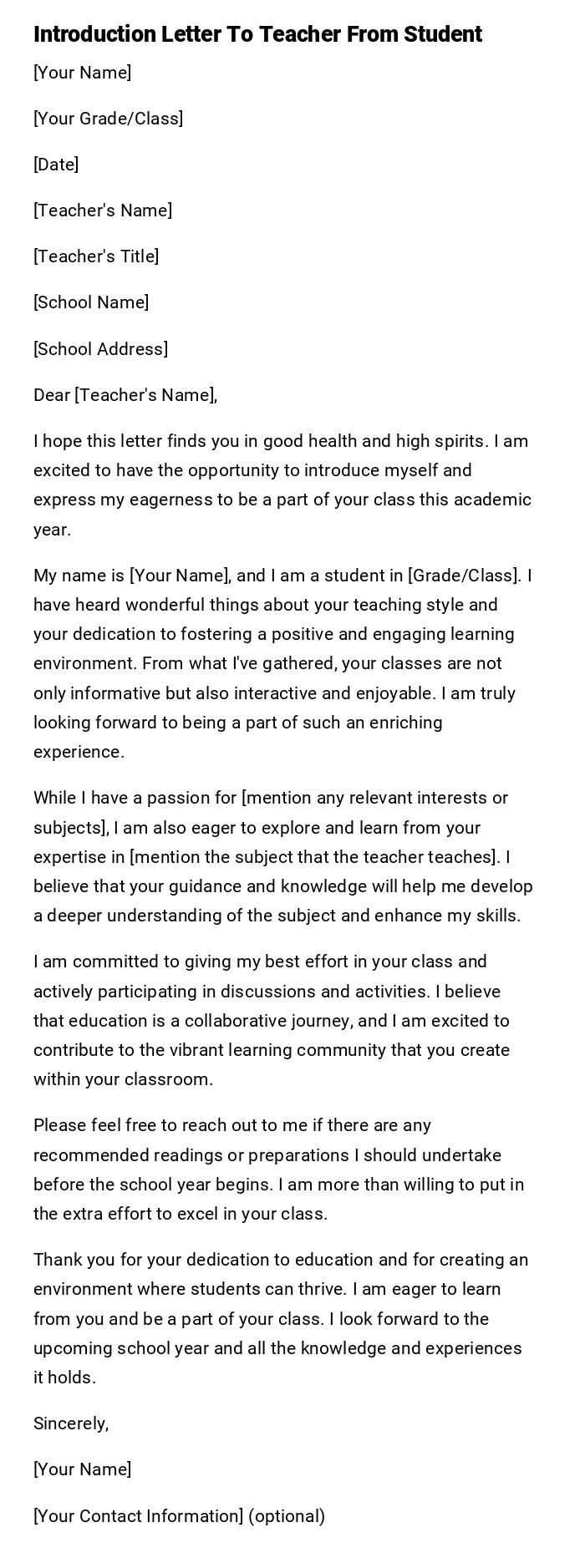
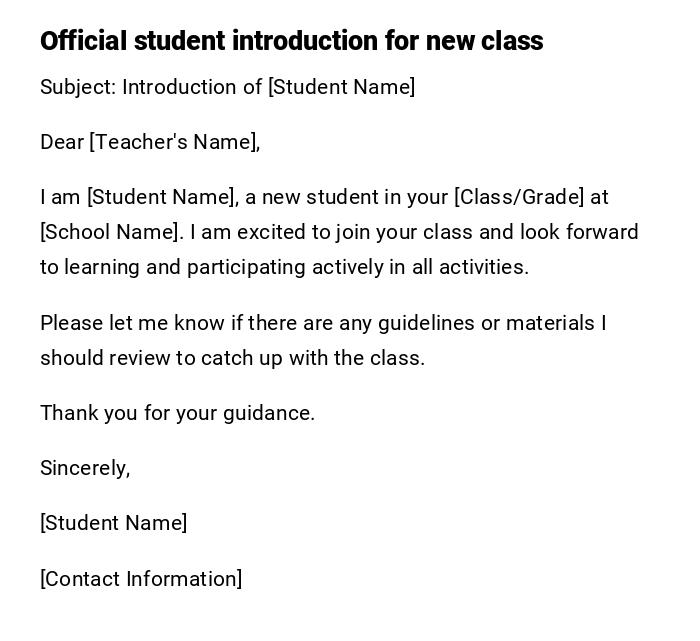
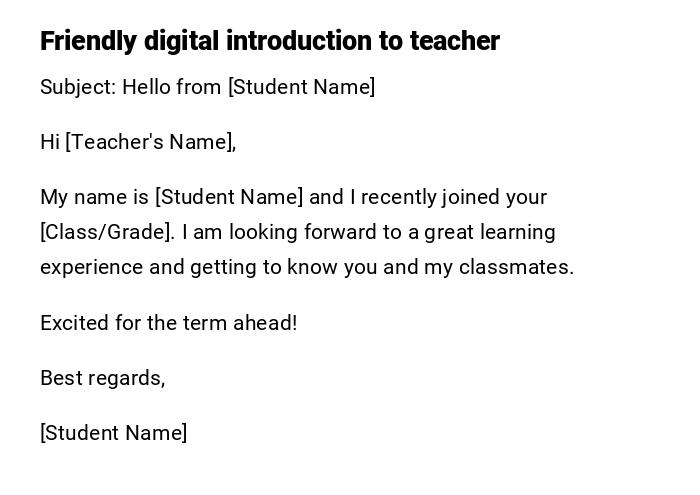
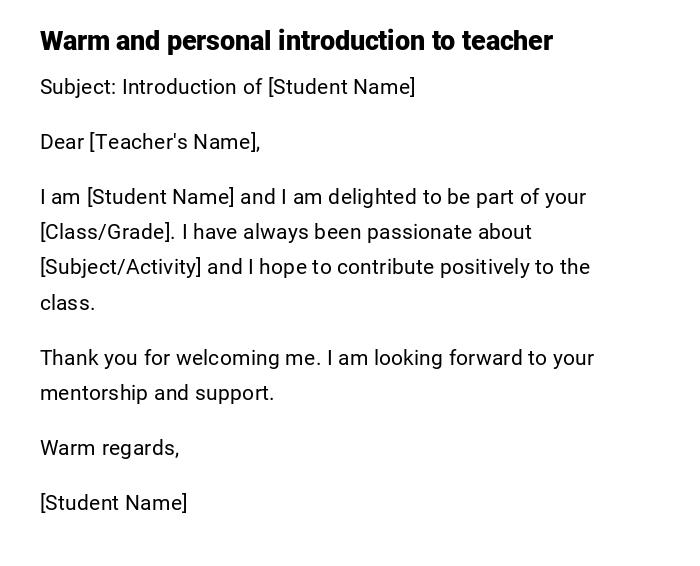
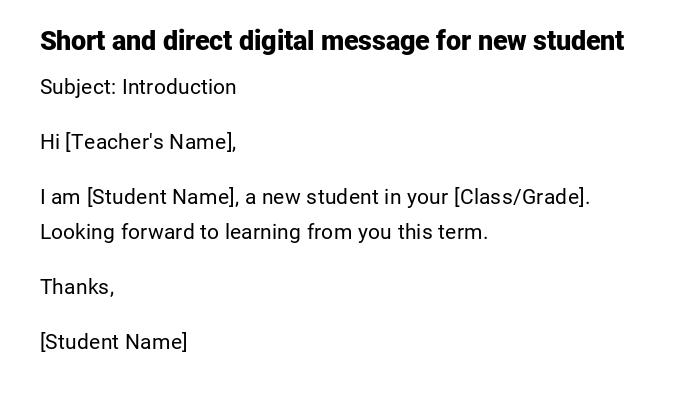
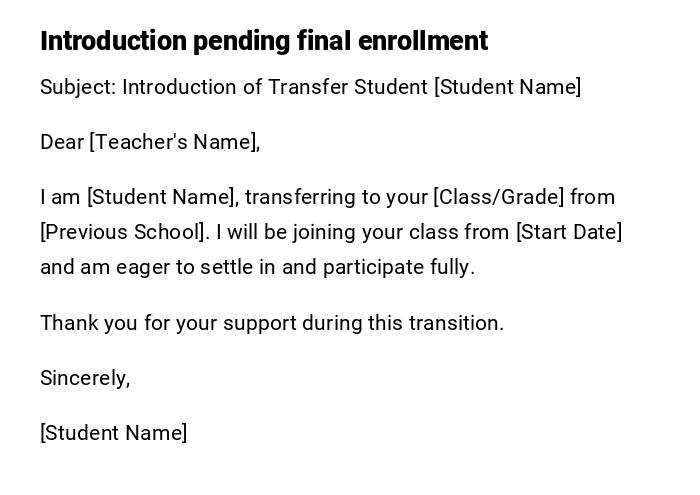
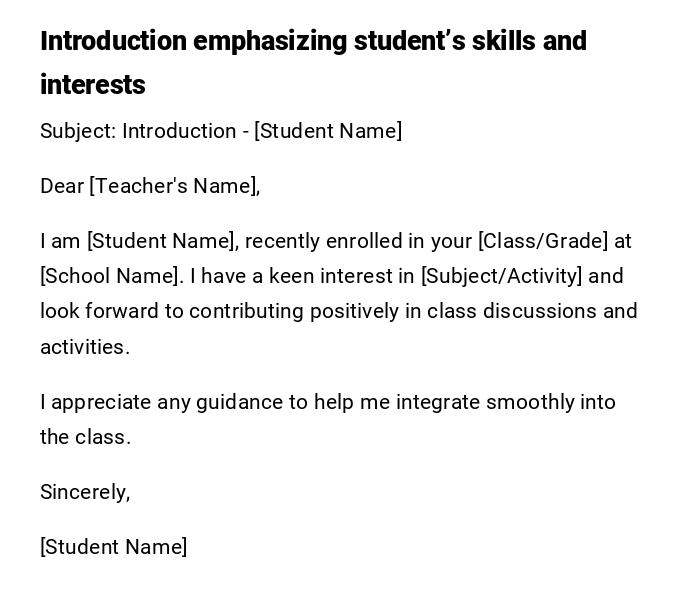
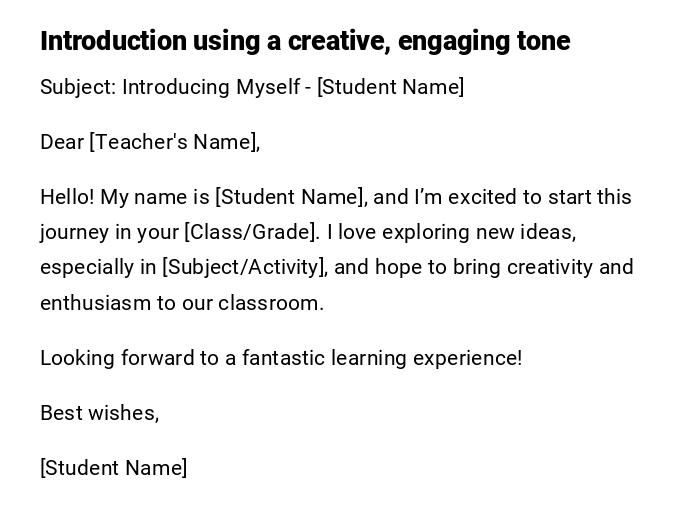

 Download Word Doc
Download Word Doc
 Download PDF
Download PDF